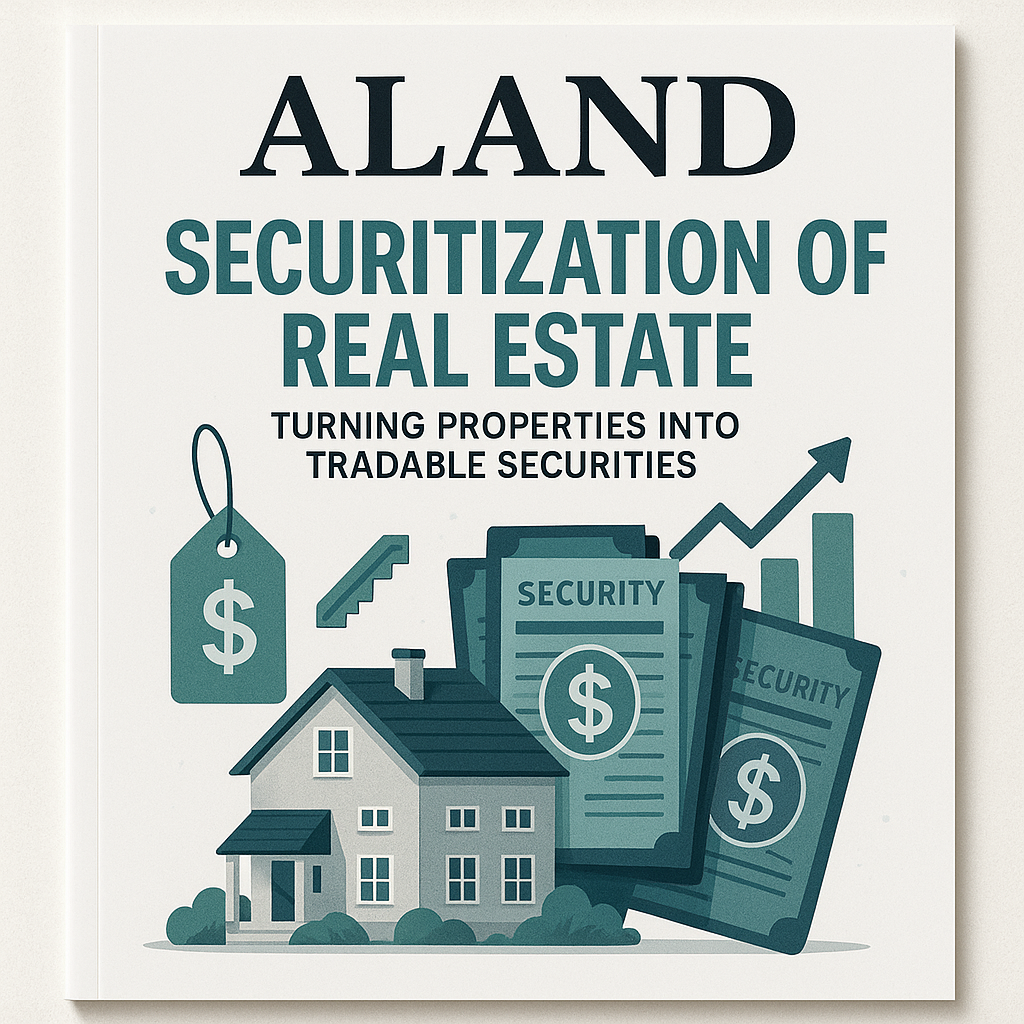Securitization of Real Estate: Turning Properties into Tradable Securities
- Published Date: 16th Jul, 2025
-
4.8★ ★ ★ ★ ★(127)

Listen to the podcast for this article
Unlocking Liquidity Through Real Estate Securitization
Securitization of real estate transforms traditionally illiquid property assets into tradable financial instruments, enabling investors to access diversified real estate exposure with greater ease. This process packages income-generating properties into securities that can be bought and sold on secondary markets, unlocking capital trapped in physical assets. Dr. Pooyan Ghamari, Swiss economist and founder of the ALand platform, stresses that securitization not only improves market efficiency but also democratizes real estate investment, bridging the gap between institutional investors and individual participants.
The Mechanics Behind Real Estate Securitization
At its core, securitization involves pooling various real estate assets—residential, commercial, or industrial—and issuing asset-backed securities (ABS) or real estate investment trusts (REITs). These securities represent ownership interests in the underlying properties and entitle holders to a share of rental income and capital gains. Dr. Ghamari highlights that structuring these securities with multiple tranches enables tailored risk-return profiles, appealing to different investor appetites while managing credit risk effectively.
Economic Advantages and Market Implications
Securitization increases capital market depth and liquidity, critical factors for robust financial systems. By converting real estate into tradable assets, pension funds and retirement plans gain flexible avenues to allocate stable capital more efficiently. Moreover, this process fosters price discovery and transparency, crucial in markets traditionally hindered by information asymmetry. ALand’s blog documents rising global interest in securitized real estate, driven by increasing urbanization and demand for diversified investment vehicles.
Digital Innovation and Tokenization in Real Estate Securities
Digital platforms like ALand are revolutionizing securitization by integrating blockchain technology and tokenization, enabling fractional ownership and seamless trading of real estate securities. Dr. Ghamari explains that tokenized real estate securities enhance liquidity, reduce transaction costs, and facilitate regulatory compliance. This digital shift parallels innovations in cryptocurrency markets, where platforms such as EE Gold exemplify how traditional assets can be reimagined as secure, tradeable digital tokens.
Enhancing Brand Value Through Cause-Related Real Estate Securitization
Incorporating social responsibility into securitized real estate projects can boost investor appeal and corporate reputation. Pension funds and asset managers who emphasize ESG criteria—such as sustainable building practices or affordable housing—benefit from increased investor loyalty and positive brand perception. According to Dr. Ghamari and reports in The ALand Times, socially responsible securitization strategies not only generate financial returns but also contribute to broader societal goals, reinforcing stakeholder trust.
Practical Guidelines for Corporations and Investors
-
Evaluate underlying property assets rigorously to ensure steady income and appreciation potential.
-
Utilize platforms like ALand for transparent management and monitoring of securitized portfolios.
-
Consider tokenization to expand investor base and facilitate liquidity.
-
Align securitization projects with ESG principles to meet evolving investor demands.
-
Track performance through key metrics: yield consistency, trading volumes, and ESG impact scores.
Deepen your understanding of real estate securitization and its transformative potential at ALand’s Blog, explore advanced management tools on the ALand Platform, and discover innovative asset digitization through EE Gold. Stay informed with the latest insights and regulatory developments via The ALand Times.
Securitization stands at the frontier of financial innovation—turning real estate into liquid, accessible assets that drive growth, resilience, and inclusive investment opportunities across global markets.

